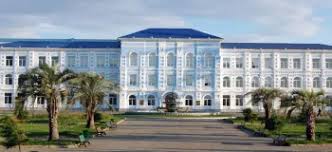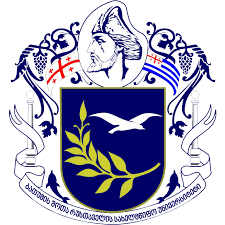Batumi Shota Rustaveli State University is a major center of education, science, and culture in our country, with a centuries-old history.
The establishment and development of the educational system in Adjara was a constant concern of Georgian society. In 1893, the issue of opening a boys' gymnasium in Batumi was raised. On June 26-27, 1895, the city government allocated 2,623.95 sq. sazhens of land near the seashore for the building of the boys' gymnasium. The plan of the gymnasium building was drawn up by military engineer Sedelnikov. The first floor of the school housed a gymnasium, and on the second floor - a church, an assembly hall, eight classrooms, an art class, a physics room, a laboratory and a library. In July 1897, the boys' gymnasium began to function. On September 26, 1900, it became possible to open a women's gymnasium. Later, by 1923, a pedagogical institute was founded in the former building of the women's gymnasium (currently secondary school No. 2), which was later transformed into a pedagogical technical school. It trained first-level school teachers.
In 1935, a two-year pedagogical institute was opened in the building of the boys' gymnasium with 4 faculties: Georgian Language and Literature, Physics-Mathematics, History, and Natural Sciences-Geography, to which the faculties of Physical Education were added in 1936, and the faculties of Russian Language and Literature in 1938.
In 1938, the institute was named after Shota Rustaveli.
The first director of the Pedagogical Institute was Khusein Nakaidze. Other higher educational institutions of Georgia, primarily Tbilisi State University, provided significant assistance to the institution in providing it with scientific personnel. Outstanding representatives of Georgian science worked at Batumi Shota Rustaveli State University (at that time - the Pedagogical Institute): Giorgi Akhvlediani, Giorgi Tsereteli, Iase Tsintsadze, Sargis Kakabadze, Simon Kaukhchishvili, Giorgi Tavzishvili, Razhden Khutsishvili, Dimitri Gedevanishvili, Giorgi Javakhishvili, Vukol Beridze, Shota Dzidziguri and others. It is also thanks to them that the newly founded higher school soon got on its feet, a system of educational and scientific activities was formed, and the number of local scientific personnel began to grow - by 1943 there were already 5 candidates of sciences at the institute.
In July 1935, preparatory courses were established, which especially helped attract applicants from the mountainous regions of Adjara. According to statistics, in the first academic year, six hundred applicants applied to the institute, and 219 of them were enrolled.
In June 1945, a Pedagogical Institute was established on the basis of the Batumi Pedagogical Institute. Its reconstruction and improvement of the material and technical base began. In 1956, a renovated building was put into operation, however, due to the growth of the institute, this was no longer enough, and in 1977, construction of a new, five-story building began, which was completed in 1982.
As a result of the collapse of the Soviet Empire and Georgia's struggle for independence, the dream of the great Ivane Javakhishvili became a reality: "If there is to be a second university in Georgia, it should be opened in Batumi."




